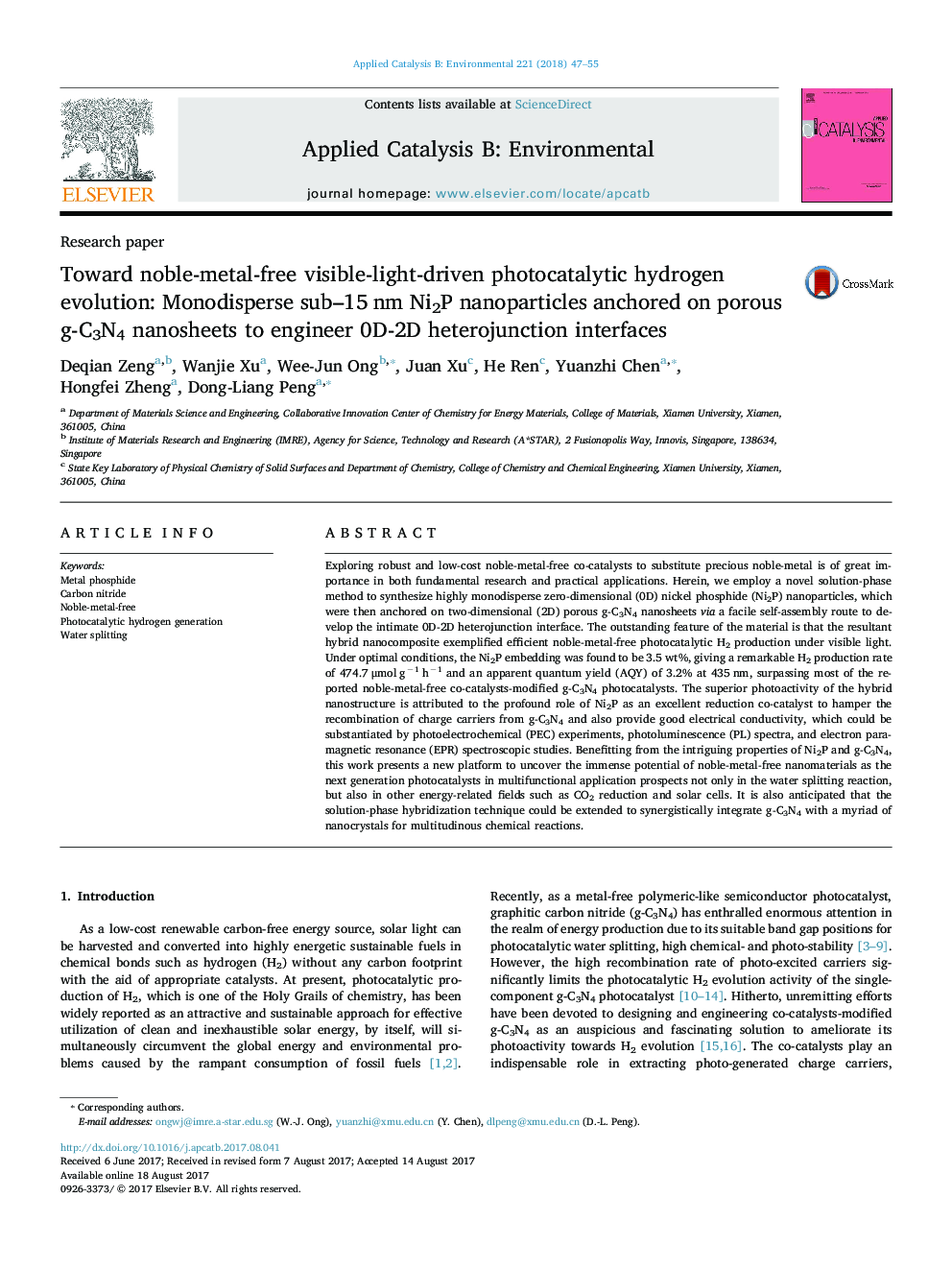| Article ID | Journal | Published Year | Pages | File Type |
|---|---|---|---|---|
| 6453391 | Applied Catalysis B: Environmental | 2018 | 9 Pages |
â¢Monodisperse Ni2P nanoparticles were developed by a novel two-step synthetic route.â¢A solution-phase self-assembly method was employed to couple g-C3N4/Ni2P heterojunction.â¢Ni2P acts as an efficient co-catalyst integrated g-C3N4 for photocatalytic H2 evolution.â¢A high apparent quantum yield of 3.2% at 435 nm was achieved by g-C3N4/3.5% Ni2P.
Exploring robust and low-cost noble-metal-free co-catalysts to substitute precious noble-metal is of great importance in both fundamental research and practical applications. Herein, we employ a novel solution-phase method to synthesize highly monodisperse zero-dimensional (0D) nickel phosphide (Ni2P) nanoparticles, which were then anchored on two-dimensional (2D) porous g-C3N4 nanosheets via a facile self-assembly route to develop the intimate 0D-2D heterojunction interface. The outstanding feature of the material is that the resultant hybrid nanocomposite exemplified efficient noble-metal-free photocatalytic H2 production under visible light. Under optimal conditions, the Ni2P embedding was found to be 3.5 wt%, giving a remarkable H2 production rate of 474.7 μmol gâ1 hâ1 and an apparent quantum yield (AQY) of 3.2% at 435 nm, surpassing most of the reported noble-metal-free co-catalysts-modified g-C3N4 photocatalysts. The superior photoactivity of the hybrid nanostructure is attributed to the profound role of Ni2P as an excellent reduction co-catalyst to hamper the recombination of charge carriers from g-C3N4 and also provide good electrical conductivity, which could be substantiated by photoelectrochemical (PEC) experiments, photoluminescence (PL) spectra, and electron paramagnetic resonance (EPR) spectroscopic studies. Benefitting from the intriguing properties of Ni2P and g-C3N4, this work presents a new platform to uncover the immense potential of noble-metal-free nanomaterials as the next generation photocatalysts in multifunctional application prospects not only in the water splitting reaction, but also in other energy-related fields such as CO2 reduction and solar cells. It is also anticipated that the solution-phase hybridization technique could be extended to synergistically integrate g-C3N4 with a myriad of nanocrystals for multitudinous chemical reactions.
Graphical abstractDownload high-res image (221KB)Download full-size image
